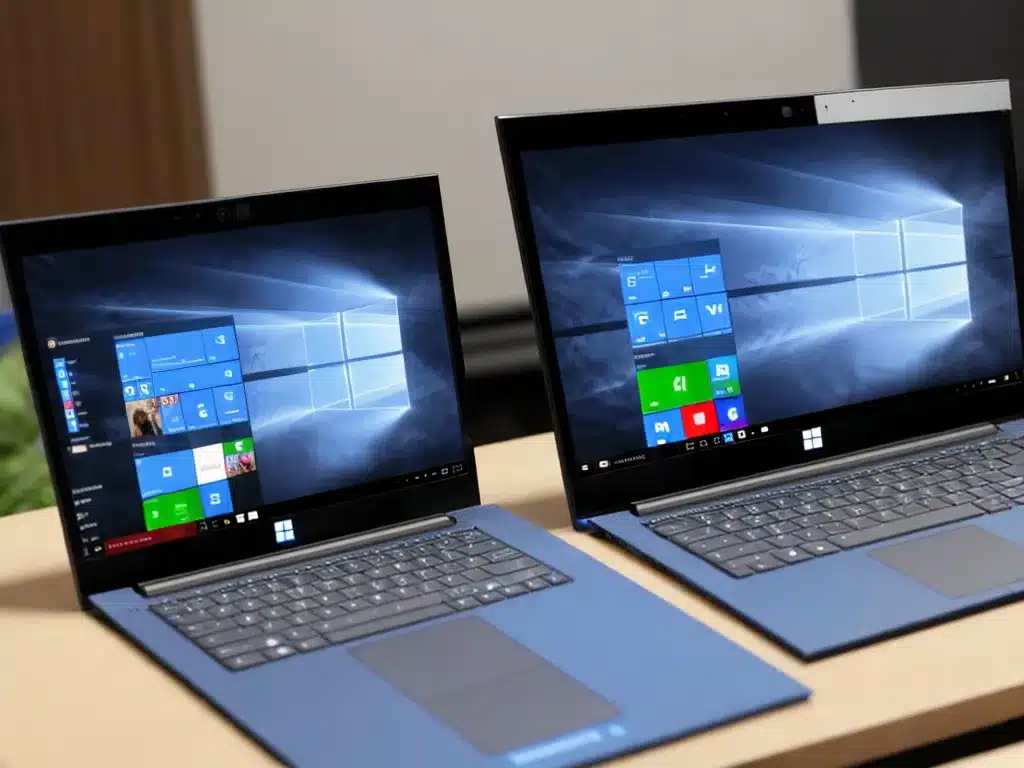
Introduction
Virtual desktops, also known as virtual workspaces, allow you to have multiple desktop environments open at the same time in Windows. They provide a great way to organize your applications and windows into separate workspaces for improved productivity and multitasking.
In this article, I will cover in depth whether Windows 11 supports using virtual desktops, how to set them up, tips for using them effectively, and any limitations you need to be aware of when working with virtual desktops in the latest version of Windows.
Does Windows 11 Support Virtual Desktops?
The short answer is yes, Windows 11 fully supports using virtual desktops.
Virtual desktop capability was first introduced in Windows 10, and this feature has been carried over and improved in Windows 11. Windows 11 allows you to create multiple virtual desktops and easily switch between them.
Some of the key benefits of using virtual desktops in Windows 11 include:
-
Organizing applications and windows into separate workspaces for different tasks or projects. This can help minimize clutter and distractions.
-
Improved productivity and multitasking by allowing you to quickly switch between discrete workspaces.
-
Better workflow for certain tasks that require multiple applications and windows open.
-
More screen space to have more applications and windows open than can fit on a single desktop.
So in summary – virtual desktops are fully supported and included in Windows 11 right out of the box. The functionality is built right into the operating system.
How to Set Up Virtual Desktops in Windows 11
Using virtual desktops in Windows 11 is easy and straightforward. Here are the steps to set up and start using virtual desktops:
Enable Virtual Desktops
Virtual desktop capability is enabled by default in Windows 11, so you likely won’t need to do anything here. But to verify:
-
Open the Windows Settings app.
-
Navigate to System > Multitasking.
-
Check that the toggle for “Use virtual desktops” is switched to the On position.
Create Additional Virtual Desktops
Once virtual desktops are enabled, you can start adding more:
-
Open the Task View by clicking the Task View button on the taskbar or using the Windows Key + Tab keyboard shortcut.
-
In Task View, click the New desktop button (a plus icon) to add a new virtual desktop.
-
Repeat to create as many additional virtual desktops as needed.
Switch Between Virtual Desktops
There are a few ways to navigate between your virtual desktops:
-
Open Task View and click on your desired desktop thumbnail to switch to it.
-
Use the Windows Key + Ctrl + Left/Right Arrow shortcuts to cycle through desktops.
-
Use the Windows Key +
shortcut to jump to a specific desktop.
Once you get the hang of virtual desktops, switching between them is very quick and easy.
Tips for Using Virtual Desktops Effectively in Windows 11
Here are some tips to use virtual desktops effectively and maximize productivity:
-
Name your desktops – Give each desktop a logical name based on how you plan to use them, like “Email”, “Writing”, “Graphics Design”, etc.
-
Group similar apps/windows – Keep apps and windows for specific tasks confined to their relevant desktops.
-
Minimize clutter – Close apps and windows when done to maintain clean desktop spaces.
-
Use desktop-specific wallpapers – Set different wallpapers for each desktop to easily distinguish between them visually.
-
Add desktops as needed – It’s easy to create more desktops if your needs change. Don’t limit yourself to just 2 or 3.
-
Use workflows efficiently – Structure your desktops and apps to facilitate efficient workflows as you move between desktops.
-
Use shortcuts – Keyboard shortcuts make switching fast; use Windows Key + Tab and Windows Key + Ctrl + Left/Right Arrow.
Proper desktop organization and the use of shortcuts can make virtual desktops a very effective productivity tool in Windows 11.
Limitations of Virtual Desktops in Windows 11
Virtual desktops in Windows 11 work very well but there are some limitations to be aware of:
-
Learning curve – It takes some time to get used to virtual desktops if you’ve never used them before.
-
Program compatibility – Some older apps don’t support virtual desktops and may not move over properly when switching.
-
Hardware restrictions – Virtual desktops utilize more resources, so low RAM/VRAM could impact performance.
-
Desktop limits – Windows 11 allows a maximum of 10 virtual desktops. Power users may want more.
-
Display restrictions – Windows only permits virtual desktops across monitors that run at the same resolution and orientation.
-
Gaming difficulties – Games and apps in full screen mode don’t always play nice with virtual desktops.
So while not a dealbreaker, there are some areas where virtual desktop utility may be more limited. Power users should be aware of these constraints.
Conclusion
To wrap up, Windows 11 fully supports virtual desktops and this feature can be very useful for organizing workflows and improving productivity. Setting up virtual desktops is simple and the system provides keyboard shortcuts and tools to easily manage and switch between desktops. While some limitations exist, virtual desktops remain a very powerful capability in Windows 11 for most users. With proper use, they can allow you to multitask and organize your work much more efficiently.












